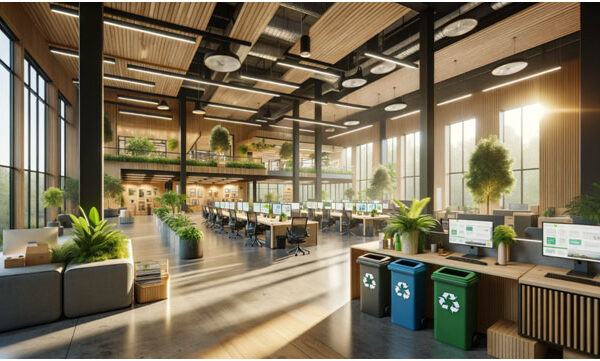
Image Credit: rawpixel / Pixabay
The general consensus has gone back and forth as to whether open office spaces help boost productivity. There is research that suggests that coworkers in open office spaces have poorer relationships and reduced job satisfaction. Some people have a hard time concentrating while trying to work in the same room as all their colleagues. However, there are several distinct advantages to working in an open office space.
Open Office Spaces Limit Superfluous Chit-Chat
One might conclude that an open office space would foster a lot of social conversations that are not actually relevant to the task at hand. However, research indicates that the open setting and lack of secluded space to converse actually discourages unnecessary conversations. People tend to socialize more in private settings, where they believe they will not be overheard. Studies indicate that people tend to be less social in general in open office spaces. People in open office spaces have been shown to have more frequent interactions with their coworkers, but actually spend less time overall interacting.
Open Office Spaces Inspire Constructive Conversations
When people in a workspace share the same goals and are respectful of each other’s noise preferences, open office spaces work great for fostering productive interactions without lowering workers’ job satisfaction. Workers in open office spaces have more opportunities to collaborate with their coworkers.
Workers in open office spaces are more likely to learn from their coworkers. Training new employees is often easier in an open office space. They are not left to flounder in their own offices and can quickly and easily ask any number of people for help without greatly interrupting anyone’s workflow. Also, its easier to learn important information from overheard conversations in a shared space. Anyone can ask for help and receive it in short order. Employees can put up whiteboards, flow charts, drawings, and mind maps, and all contribute to these tools when they have ideas. Open office spaces allow for constant group brainstorming and problem-solving.
How Open Office Plans Can Be Made to Work
The employees’ mindset is the most important element of making an open office space work for a company. They have to be available to help others without getting too distracted with everyone else’s tasks. They also have to be able to see periodic interruptions as opportunities to help and learn, instead of as problems.
It is also important to establish rules as a team. These should be discussed as a team in order to gain full cooperation. For example, there should be agreed upon way to ask one’s colleagues not to interrupt a task. Appropriate noise levels and activities should be discussed to minimize distractions. Protocols for brainstorming productively can be established, so everyone knows how they will be expected to contribute.
If possible, open office spaces should establish some more private spaces as well. For example, it is often helpful to have a room available for quiet work time. In addition, there should be meeting rooms for projects that require extensive discussion between specific team members, since tasks that require in-depth discussion do poorly in open work environments.
Another factor that contributes to successful open workspaces is if everyone is working on connected tasks. If everyone is working on projects that are mostly independent of each other, they can become distractions to one another. However, if the tasks are connected, employees are able to work on most of the tasks collectively. In this circumstance, workers must be able to quickly exchange information and become used to lots of short interaction throughout the day instead of fewer longer discussions.
Lastly, it is important to realize that open workspaces do not work for every type of work. For example, scientists doing research found that open workspaces were too distracting. Any workplace that specializes in mostly individual tasks will probably not be benefited by an open floor plan. When considering an open workspace, match the nature of the tasks with the space.




